Home >Technology peripherals >AI >Intel will not waste the opportunity of global IT demand explosion
Intel will not waste the opportunity of global IT demand explosion
- 王林forward
- 2023-04-08 16:31:08746browse
The best way to deal with a crisis has always been to seek change.
On May 18, the United Nations released its latest forecast for the world economic situation, increasing the global economic growth rate in 2022 from the 4% forecast in January this year. It was revised down to 3.1%, while global inflation is expected to rise to 6.7%, twice the 2010-2020 average. The raging epidemic in the past two years is inevitably dragging the global economy into a downward cycle.
The overall deteriorating economic environment has put tremendous pressure on global companies. The "money bags" of both C-side and B-side customers have become tighter, and inflation has It will also cause a large number of enterprises to face the challenge of rapidly rising costs. It has also forced many companies to stop their development and instead examine and optimize themselves, including the news of layoffs that have often spread this year.

But in addition to "subtraction", companies actually start in unison "Addition": According to a survey last year by enterprise data and network company Equinix, 47% of surveyed companies around the world accelerated the implementation of digital transformation plans, and more than 40% of companies directly increased their IT (information technology) budgets. More than half of companies have completely revamped their IT strategy.
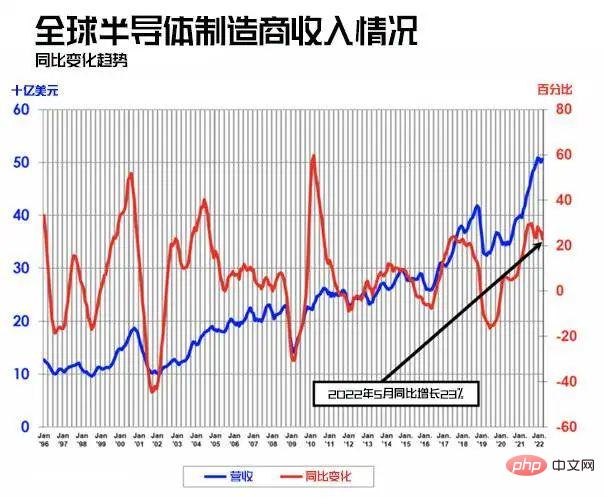
The renewed enthusiasm for digitalization among enterprises is also reflected in the development of the semiconductor industry. According to statistics from the U.S. Semiconductor Industry Association (SIA) at the end of last month, total global semiconductor sales reached a new high in the first quarter of 2022, reaching US$151.7 billion, a year-on-year increase of 23%. Compared with the first year of 2020, the sales of the semiconductor industry have increased by nearly 40% in two years.
"How to adapt your IT to the post-epidemic era"
is becoming a digital challenge that most companies and industries must face. .#For example, the remote working model, which is the most direct and influential, is becoming the long-term choice of more and more enterprises. The CEO of Airbnb, a well-known homestay short-term rental platform, publicly stated at the end of last month: "Offices are outdated and employees can work remotely permanently." In order to ensure the efficiency and reliability of online remote working, the enterprise's IT infrastructure must be adjusted on the original basis.

The second is the sudden transformation of industries and services in the post-epidemic era. Take the financial industry as an example. In the past, the implementation of financial digitalization in developed countries such as the United States was not smooth. Consumers preferred to use physical credit cards offline. However, under the influence of the epidemic, a large number of customers were forced to turn to online banking services, resulting in online banking services. The business volume of banks and call service centers has surged, and financial companies must quickly and flexibly redeploy IT resources that were used offline to online. In the future, when the epidemic is finally controlled, customers may shift offline again. At that time, financial companies must "transform" again, which will put forward high flexibility requirements for the company's IT infrastructure.
######### Shifting from a relatively fixed proprietary IT architecture to a greater use of cloud computing has always been an important means to promote the digitalization process. Although cloud computing has strong computing power and is inherently flexible, just like the update of its own IT architecture, the cloud also requires increasingly more powerful chips and hardware as its core infrastructure, as well as increasingly innovative software optimization to support it. #################################The most typical challenge in the field of cloud computing is the growing amount of data, according to authoritative consulting According to statistics from the agency IDC, at least close to 70ZB of data will be created globally in 2021, which is a significant increase from the 45ZB in 2019 before the epidemic. This extra amount of data is enough to fill 100 billion 256GB mobile phones. ############The key to creating such huge data is the massive network access demand created by the shift from offline to online. Take Guangdong Province's own government affairs platform "Guangdong Provincial Affairs" as an example. Because it provides a series of services including health codes and nucleic acid testing, the number of daily visitors is as high as 40-50 million, and the actual number of visits has reached hundreds of millions. The numbers are close to many search engine visits with a market value of 40-50 billion US dollars.
Many data that were simply processed and transmitted in the past have now become the nourishment for the development of artificial intelligence. Through powerful AI computing power, they are turned into Human programmers cannot directly write neural models and apply them to final reasoning. Just for the unsolved natural language (NLP), the number of parameters of the neural model has reached 150 billion (OpenAI GPT-3), and the demand for AI computing power has shown an exponential trend.
The changes in social operation and structure caused by the epidemic are still changing the business operations of all walks of life. The new demand for digital processing capabilities and The need for flexibility in dealing with uncertainty is intertwined. It is necessary to seize new opportunities and make full use of new technologies, while also considering cost scale, speed to market, etc. These all put enterprise business managers and technology managers in unprecedented situations. complex challenges.
They must start from the actual problems to be solved now and in the future, and consider the construction of IT infrastructure from a new perspective, including leading technologies, solutions, Scale, resources, ecosystem support, etc., plan future technology routes, amplify the value of innovative technologies, accelerate the digital transformation of enterprises, thereby ensuring corporate performance growth and industry leadership. This is the topic Intel and the industry discussed at the 2022 Intel On Industry Innovation Summit last week.
##In response to change, vision must come first
Just like the familiar joke of "putting the elephant in the refrigerator", the IT demand path in the post-epidemic era is also a "two-step": creating a complete set of performance improvements IT infrastructure that is strong and covers multiple scenarios and application requirements; allowing customers and industries to flexibly make full use of this facility.
Intel, a leader in providing chips and technologies for global IT infrastructure, will be held offline in Dallas, USA on May 10th and 11th, US time. The first Intel On Industry Innovation Summit (Intel® Vision) of the ON series conference after the return of IDF, and the Chinese version of the content was also launched last Wednesday. At this conference, whose name means "Vision", Intel focused on sharing its latest ideas and achievements in expanding the depth and breadth of chips, providing new technologies including hardware, software and services, and shared its latest ideas and achievements with the world. Innovative examples of digital transformation from leading companies and new possible use cases.The first is the technical direction to promote digital transformation. Intel’s current CEO Pat Gelsinger summarized them into four “superpowers”:
Ubiquitous computing, ubiquitous connectivity, cloud-to-edge infrastructure and artificial intelligence. And Intel also formulates its own strategy based on these four superpowers.
The focus of "ubiquitous computing" is on product coverage. Taking Intel itself as an example, the advancement of the XPU strategy allows Intel to provide CPUs, A complete product portfolio including GPU, IPU and various accelerated computing chips; and then "infrastructure from cloud to edge". Infrastructure requires higher-performance clients, smarter terminals, edge computing, various networks, More powerful data centers and more flexible clouds, etc.; "Ubiquitous connectivity enables customers to collect, store, access and analyze data anytime, anywhere, and make full use of related services, namely the Internet of Everything and the Internet of Everything. "Artificial Intelligence" relies on depth Technologies such as learning and reasoning, machine learning, etc., make everything intelligent, gain insights more easily, and ultimately solve practical problems, while also ensuring that AI is good.
These four major forces are not "new". They themselves are continuing to develop and have huge energy. However, Intel continued to emphasize at this summit that these four major forces interact and amplify together. Being able to solve more complex and large-scale problems, and being able to provide products and solutions for these four major forces at the same time is Intel's advantage. This time Intel has come up with a series of new products and solutions that leverage the combined power of the four major forces. The solution is enough to prove the strength of Intel’s technological innovation.
#In addition to releasing new 12th Generation Intel® Core™ for commercial clients, it provides blazing performance for professional workloads such as CAD, animation and visual effects. Except for the HX processor, the other four products are from the data center and artificial intelligence division.
are:
1. Dedicated to high-performance deep learning Habana Gaudi2 processor and Greco AI accelerator for AI training;
2, Intel data center graphics card (codenamed Arctic Sound-M);
3. Some details of the fourth generation Intel® Xeon® Scalable processor (codenamed Sapphire Rapids);
4, and the roadmap (development plan) of Intel Infrastructure Processor (IPU).
These four types of hardware cover IPU, CPU, GPU, and AI processor; application scenarios also cover from cloud to edge to terminal .
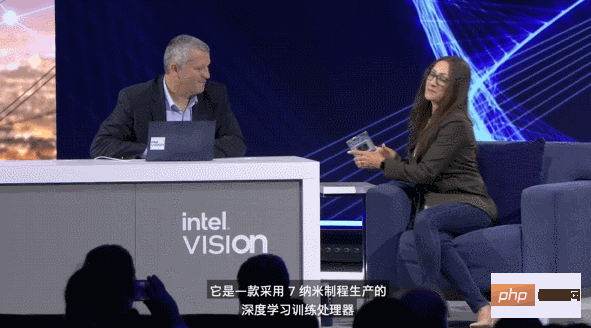
##Intel Habana Gaudi2 Deep Learning Training Processor
The first is the two AI products "Habana Gaudi2 AI deep learning training processor" and Greco AI accelerator that can be used in data centers and clouds. Habana Gaudi 2 uses more advanced 7nm technology based on the upgrade of the specifications of the processor itself. Process and configuration 96GB high-speed storage, while the onboard SRAM has been increased from 24MB to 48MB. Compared with the previous generation product, the performance has been significantly improved. It can provide higher performance for model training and reasoning of computer vision and natural language processing, and solve the most important concerns of customers. Two problems: reducing server processing costs and reducing the time required to train the model.
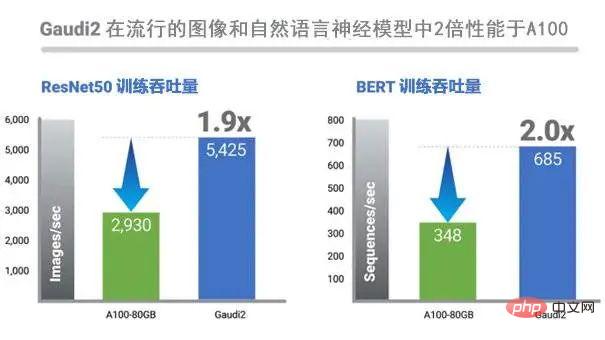
Intel had previously jointly developed a technology with the University of Pennsylvania School of Medicine. Applying federated learning algorithms helps 29 international medical institutions, including the University of Pennsylvania, to jointly train neural models using brain tumor data owned by all parties while protecting patient privacy. With the addition of Gaudi2, the application of artificial intelligence in medical care will inevitably be further accelerated, thereby helping people solve more practical medical needs.
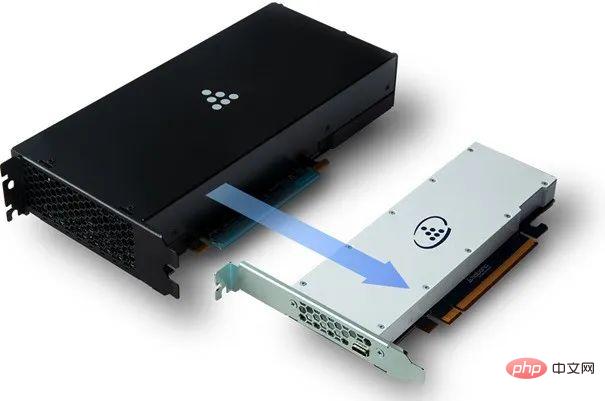
The highlight of Greco AI accelerator lies in the special optimization of AI inference application scenarios. The application of more advanced semiconductor processes reduces power consumption to 75W, making accelerator cards equipped with Greco AI accelerator more convenient for use in servers. Looking at the current development progress of AI processors around the world, the computing power and energy efficiency performance of these two Intel processors are outstanding in the entire industry.
Then there are brand new data center CPUs and GPUs. The fourth generation Intel® Xeon® Scalable processors, codenamed Sapphire Rapids, have officially begun shipping. By supporting DDR5, PCIe 5.0 and CXL 1.1, and with new integrated accelerators and software and hardware optimizations for AI workloads, the fourth generation Intel® Xeon® Scalable processors achieve significant performance improvements compared to the previous generation. For example, it integrates Intel communication acceleration technology to help improve throughput; it uses Intel data flow accelerator to support more efficient data movement, including movement from the cloud platform to the edge.
Sapphire Rapids has also been specially optimized for telecommunications networks and can provide up to 2 times capacity gain for virtual radio access network (vRAN) deployment. At the same time, its built-in high-bandwidth memory (HBM) will significantly increase the available memory bandwidth of the processor and provide strong power for high-performance computing.

##Argonne National Laboratory supercomputer "Aurora"
Through cooperation, Intel helps enterprises make full use of Xeon processors and software and hardware product portfolios to build optimized solutions. As shown at the conference, the fourth-generation Intel® Xeon® Scalable processor, together with Intel's previously released data center graphics card Ponte Vecchio, has become the core architecture of the Argonne National Laboratory supercomputer "Aurora" in the United States. . Through the powerful combination of CPU and GPU, the latter's overall computing power has exceeded 2Eflop.
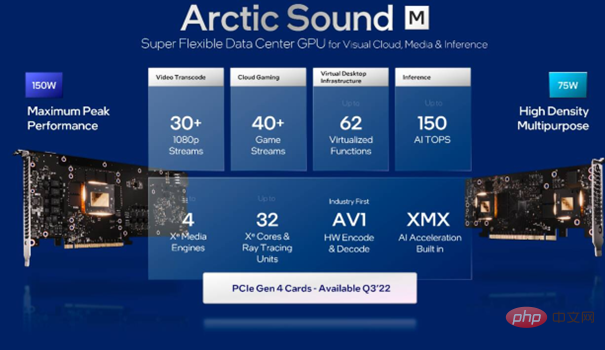
The new Intel data center GPU graphics card "Arctic Sound-M" for multimedia transcoding, visual graphics processing and cloud reasoning can provide 150 trillion operations per second and will include two different configurations, 150W The power version and the 75W power version package 32 and 16 Xe cores respectively. Both configurations come with four Xe media engines, Intel's first AV1 hardware encoder and accelerator for the data center, GDDR6 memory, ray tracing unit and built-in XMX AI acceleration. It can handle up to 8 channels of 4K video streams or more than 30 channels of 1080p video streams for transcoding, and supports more than 40 channels of high-definition resolution games and 62 remote desktops, thus supporting live streaming, cloud games, virtual machines, and AI acceleration. multi-purpose applications.
#The design that takes into account multiple usage scenarios fundamentally ensures the flexibility of the user process. In the future, by combining with Intel's own very flexible CPU, data center graphics cards will exert their highest performance in a variety of scenarios.
Finally, there is the IPU (Infrastructure Processor). Google and Facebook’s own research shows that fragmented processing needs will actually account for CPU usage. 22-80%. These fragmented requests take up CPU "time" and affect the CPU's ability to exert its maximum processing power.
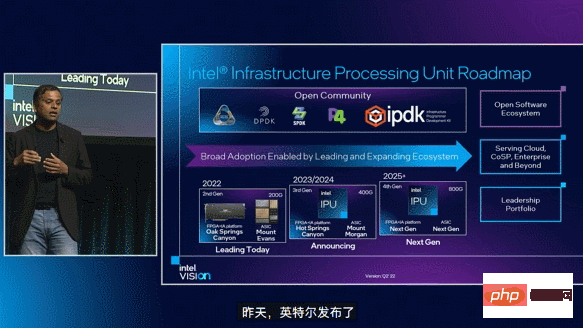
## Go all out to create an ecosystem that drives the next change
If the numerous hardware updates outside of “traditional” CPU products can already illustrate its determination to innovate, then Intel’s ecological planning and investment are the key to helping the industry and customers enjoy the driving force of semiconductor innovation. .
Take the AI processors, GPUs, and CPUs released by Intel at this summit as examples. These new products can actually be used for heterogeneous computing through Intel. For development using the unified programming architecture oneAPI, such as the Intel data center GPU Arctic Sound-M, you can use the oneAPI toolkit and its open software stack, including full-stack streaming media encoding, decoding and analysis, cloud gaming, cloud reasoning, and full-stack A wide range of open source software supported by virtual desktop infrastructure complements existing programming languages and parallel computing models with a complete and reliable toolkit that runs seamlessly between Intel® Xeon® processors and Intel data center GPUs , thereby unleashing the full performance potential of various processors.
Based on the basic programming system, Intel also announced a new "Apollo Project" at this summit, In partnership with Accenture, this program will provide enterprises with more than 30 open source artificial intelligence reference suites. These solutions are specially optimized and designed to make it easier to implement artificial intelligence in local, cloud and edge environments. The first Apollo program kits will be released in the coming months.
In addition, Intel conducted the first concept demonstration of its software infrastructure initiative, Project Endgame. Applications can take full advantage of this software infrastructure layer, allowing devices to utilize the computing resources of other devices in the network to provide always-available, low-latency, and continuous computing services. For example, when running demanding GPU workloads on one device, additional graphics processing power from a higher-performance computing device can be sensed and utilized to enhance the user experience.
# Intel also announced the launch of Intel On Demand services, which can meet the changing workload needs of enterprises, achieve sustainable product development, and grasp the future Opportunities to expand systems where data exists. Now, Intel is launching a new consumer business model to enable customers to match their infrastructure to their business needs through select partners including bare metal clouds such as HPE GreenLake, Lenovo TruScale and PhoenixNAP Provide services.
Judging from the momentum of leap-forward innovation in hardware and active follow-up in software supporting and ecological construction, it provides the necessary IT infrastructure innovation in digital transformation. Software and open ecosystem support are obviously not difficult for Intel, which has 17,000 software engineers.
Intel accelerating forward
As a historical leader in global IT and semiconductor development, Intel has been controversial in the past few years due to manufacturing processes. At the beginning of last year, with the return of a number of technical executives such as new CEO Pat Gelsinger, Intel once again showed the momentum of innovation that year.
The IDM2.0 plan proposed by Pat Kissinger in the first month after taking office not only regained Intel's determination to develop chip manufacturing, but also It gives Intel's way out in the global semiconductor industry: While manufacturing its own products, it also OEMs for outside parties, and also finds outside OEMs for itself. The semiconductor process update that has been fully promoted again has brought Intel back to the table where it can compete with TSMC and Samsung.
#At the On Industrial Innovation Summit, Pat and a group of senior executives ran on stage. Intel internally said this was "Torrid Pace". Intel also demonstrated its overall IT strategic layout, especially its ambitions for further global digitalization and IT transformation opportunities, many new products that once again pointed out the future development direction of the IT industry, as well as solutions and cases presented with a number of partners. All are demonstrating the technical strength and heritage of this established semiconductor giant.
The IT needs changed and created by the new normal have ushered in a new round of innovation in digital transformation, which is becoming the best stage for Intel to regain its strength.
The above is the detailed content of Intel will not waste the opportunity of global IT demand explosion. For more information, please follow other related articles on the PHP Chinese website!
Related articles
See more- Technology trends to watch in 2023
- How Artificial Intelligence is Bringing New Everyday Work to Data Center Teams
- Can artificial intelligence or automation solve the problem of low energy efficiency in buildings?
- OpenAI co-founder interviewed by Huang Renxun: GPT-4's reasoning capabilities have not yet reached expectations
- Microsoft's Bing surpasses Google in search traffic thanks to OpenAI technology

